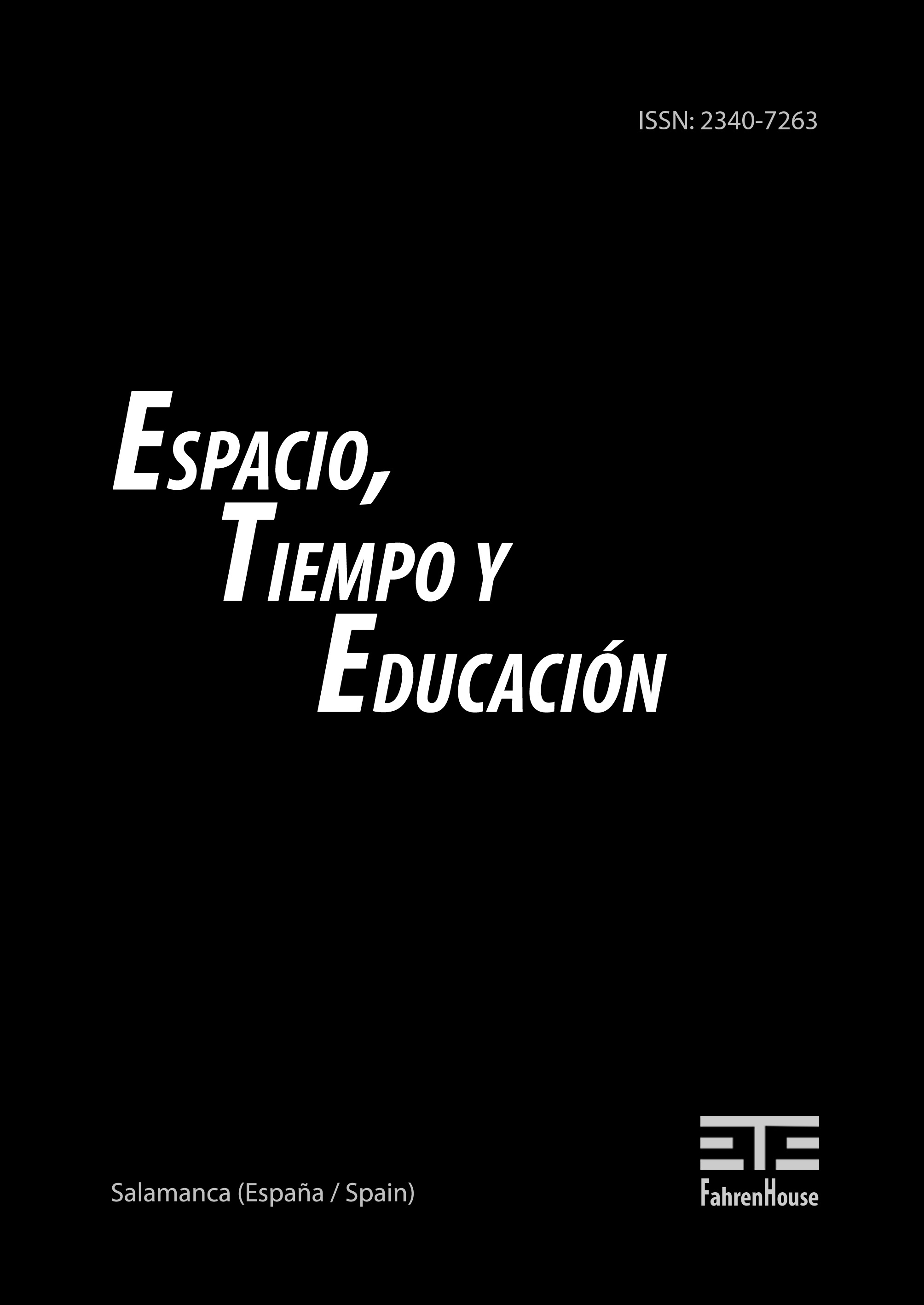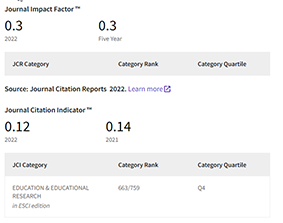Common places in the early reception of the pedagogical-musical methods. Eurhythmics in the first third of the 20th Century
DOI:
https://doi.org/10.14516/ete.465Keywords:
music education, teaching method, history of education, information disseminationAbstract
The early decades of the 20th Century enlightened some of the most successful musical methodological approaches that, even today, continue to be a benchmark in classrooms around the world. Despite the fact that it was a time of effervescence around the musical in education, not all the proposed models reached our days. Some of the pedagogical-musical methods of the twentieth century are examples of successful transmission of musical ideas from one side of the world to another. In this research, we are particularly interested in the way in which, after the publication of the ideas of any pedagogue, and in parallel to the implementation of its works in some places in Europe, its postulates are known and reworked in other contexts, producing the first couplings of its musical model from a series of patterns that are often repeated regardless of the musical approach. According with the previous, we will carry out a synthesis of bibliographical contributions which aims, in a complete or partial way, to the musical elements described by Jaques-Dalcroze in his Eurhythmics. This analysis will result in a model of methodological diffusion around the musical, based on three basic elements: the determination of the initial problem or the mythical origin of the method, the institutionalization (using a group of faithful followers for this) and the irradiation all over the world.
References
Anderson, W. T. (2012). The Dalcroze Approach to Music Education: Theory and Applications. General Music Today, 26(1), 27-33. Recuperado el 21 de octubre, 2020 de https://www.researchgate.net/publication/264159569_The_Dalcroze_Approach_to_Music_Education_Theory_and_Applications
Bachmann, M. L. (1998). La rítmica Jacques–Dalcroze. Una educación por la música y para la música. Madrid: Ediciones Pirámide.
Becknell, A. (1970). A History of the Development of Dalcroze in the United States and Its Influence on the Public School Music Program. (Unpublished thesis). Michigan University, Michigan.
Braudel, F. (1984). Civilización material, economía y capitalismo, siglos XV-XVIII. El tiempo del mundo (vol. 3). Madrid: Alianza.
Brice, M. (2003). Pédagogie de tous les possibles... La rythmique Jaques–Dalcroze. Géneve: Edition Papillon.
Comas Rubí, F., Motilla Salas, X. & Sureda García, B. (2014). Pedagogical Innovation and Music Education in Spain: Introducing the Dalcroze Method in Catalonia. Paedagogica Historica: International Journal of the History of Education, 50(3), 320-337. doi: 10.1080/00309230.2014.887123
Findlay, J. J. (1917) Eurhythmics: An Address (1ª ed.). Liverpool: Liverpool Booksellers’ Company.
Gehrkens, K. W. (1934). Music in the Grade Schools (Grades 1-6) (1ª ed.). Boston: C. C. Birchard & Co. Recuperado el 21 de octubre, 2020 de https://babel.hathitrust.org/cgi/pt?id=mdp.39015021194504&view=1up&seq=5
Giddens, A. (1993). Consecuencias de la modernidad (1ª ed.). Madrid: Alianza.
González Martín, J. (2021). Manuel Borguñó y la educación musical en las escuelas del Ateneu Igualadí de la Classe Obrera (1921-1930). Educació i Història. Revista d’Historia de l’Educació, 37, 83-105. doi: 10.2436/20.3009.01.256
Greenhead, K. (2015). Drawing Threads Together. From Influences, Development and Fragmentation to the Practice of Dalcroze Euryhthmics Today. A Personal Selection of Ideas, Applications and Intentions. Le Rythme, s/n, 12-23. Recuperado el 21 de octubre, 2020 de https://www.fier.com/uploads/pdf/lerythme2015.pdf
Hall, L. D. (1920). Dalcroze Eurythmics. En Francis W. Parker School. Studies in Education. The individual and the curriculum experiments in adaptation (vol. 6) (pp. 141-150). Chicago: Faculty of the Francis W. Parker School. Recuperado el 21 de octubre, 2020 de https://babel.hathitrust.org/cgi/pt?id=wu.89098687676&view=1up&seq=6
Heredia Agóiz, J. L. (2013). Manuel Borguñó y su aportación a la educación musical escolar. El método eurítmico vocal y tonal. Universidad de Salamanca, Salamanca. Recuperado el 21 de mayo, 2021 de https://gredos.usal.es/handle/10366/123286
Juntunen, M. L. (2011). The Legacy of Music Education Methods in Teacher Education: The Metanarrative of Dalcroze Eurhythmics as a Case. Research Studies in Music Education 33(1): 47-58. doi: 10.1177/1321103X11404653
Llongueras, J. (1942). El ritmo en la educación y formación general en la infancia. Barcelona: Labor.
Martin, F. (1955). Eurhythmics: The Jaques-Dalcroze Method. Music in education. International Conference on the Role and Place of Music Education of Youth and Adults (pp. 225-231). Paris: UNESCO.
Mason, D. G. (ed.) (1916). The Art of Music. A Comprehensive Library of Information for Music Lovers and Musicians (1ª ed.). New York: The National Society of Music.
Mead, V. H. (1996). More than Mere Movement on Dalcroze Euryhthmics. Music Educators Journal, 82(4), 38-41. doi: 10.2307/3401276
Montoliú, P. de (1915). A new Educational System Attracting Wide Attention. Émile Jaques-Dalcroze and His Method of Rhythmic Development. The Etude, 33(3), 173-174. Recuperado el 21 de octubre, 2020 de https://digitalcommons.gardner-webb.edu/etude/611/
Odom, S. L. (2015). Pioneering Work with Jaques-Dalcroze. Traces in Suzanne Perrottet’s Archive and Memories. Le Rythme, s/n, 24-33. Recuperado el 21 de octubre, 2020 de http://jaquesdalcroze.com/wp-content/uploads/2016/04/lerythme20151-2.pdf
Pope, J. L. (2007). Dalcroze Eurhythmics comes to the Ends of the Earth: The Dalcroze Diaspora. En J. Southcott (ed.) Dalcroze Eurhythmics from a Distance. A Miscellany of Current Research (pp. 34-40). Turramurra: Heather Gell Dalcroze Foundation.
Pope, J. (2008). Dalcroze Eurhythmics in Australasia: The First Generation from 1918. (Unpublished thesis). Monash University, Melbourne.
Pope, J. L. (2010). Dalcroze Eurhythmics: Interaction in Australia in the 1920s. Australian Journal of Music Education, 2, 135-147. Recuperado el 21 de octubre, 2020 de https://files.eric.ed.gov/fulltext/EJ916796.pdf
Rothe, H. (2014). The Gymnastics of Thought: Elsa Gindler’s Networks of Knowledge. En L. Cull y A. Lagaay (eds.) Encounters in Performance Philosophy (pp. 197-219). London: Palgrave MacMillan.
Spector, I. (1990). Rhythm and life: the work of Émile Jaques-Dalcroze. New York: Pendragon Press.
Tingey, N. (ed.) (1973). A Record of the London School of Dalcroze Eurhytmics and Its Graduates at Home and Overseas: 1913–1973. London: Dalcroze Society.
Urban, W. J. & Wagoner, J. L. (2009). American Education. A history (4ª ed.). New York: Routledge.
Van der Merwe, L. & Habron, J. (2019). The Dalcroze Diamond: A theory of Spiritual Experiences in Dalcroze Eurhythmics. Music Education Research, 21(2), 426-440. doi: 10.1080/14613808.2019.1612340







